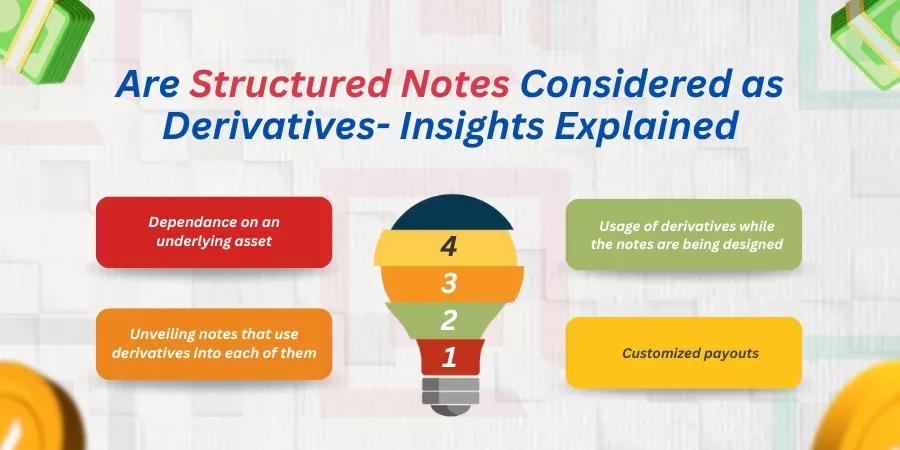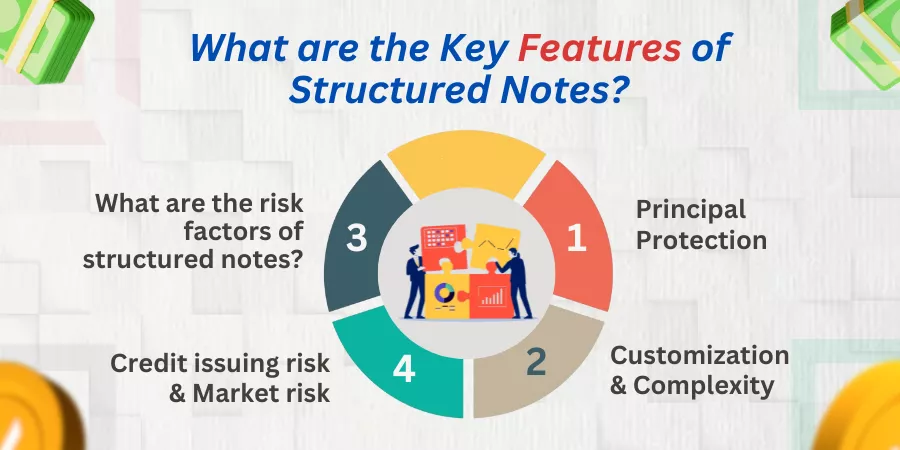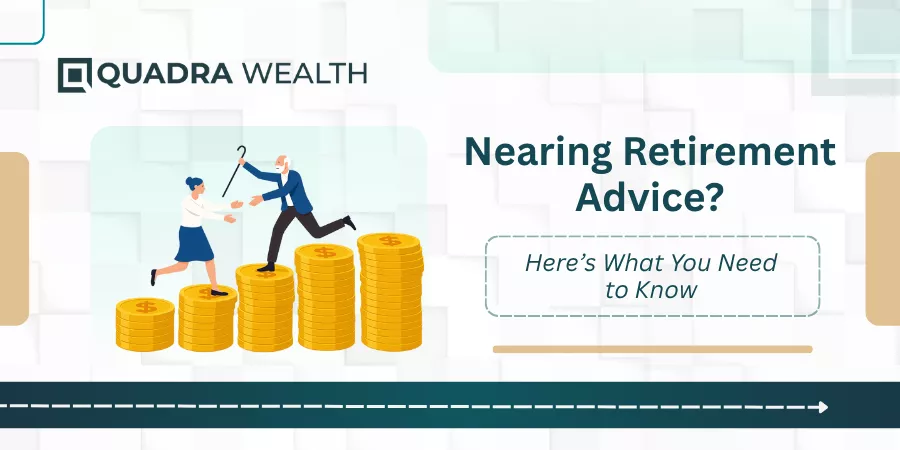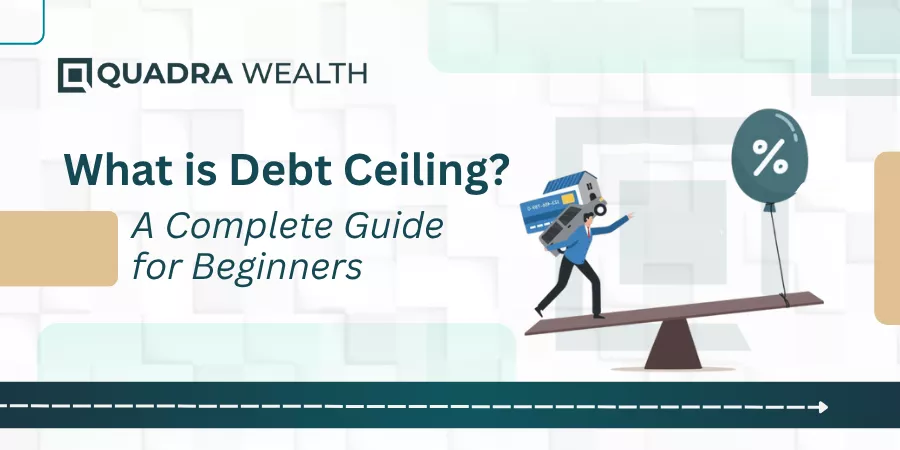Introduction
What is your understanding of what a structured note is all about? Well, this is a hybrid security that comprises an optimal mix of debt as well as equity.
If you have a closer look at how the component is structured, well this is how it goes. The note is a promissory bond that is curated or incubated in the name of the investor. And, the note is primarily designed by a product issuer. Here, the issuer can be a private wealth management firm or an investment-grade banking console.
And, you can also have independent financial managers or wealth practitioners who can design structured notes for their investors. Therefore, this is the first half of the note that is primarily known as a bond component of the structured product.
The note also comprises the other half. The second part of the note comprises of equity-based derivative component. The asset allocation comprises equities, shares, a basket of high-paying stocks, commodities, futures, and currencies to name a few. The assets are underlying the note as such.
While the bond portion of a note is a fixed component, the underlying other half is more of a variable or a derivative component.
On this parlance, let us uncover more comprehensive insights covering the blog topic- ‘Is Structured Note A Derivative’. Helping you get started further:
Working methodology of structured notes- Insights Explained
As we have already seen, the notes comprise of debt portion and underlies equity-based derivatives on the whole. Here, the debt component is a bond portion of the note that provides soft-core or hard-core protection against the investor’s capital investment. The principal amount that the investor uses to start is considered a principal amount or cap investment.
While the debt protects investor cap wallet from eroding, the potential returns the notes garner are primarily linked to the performance of equity-related derivatives the notes underlie under their structures. Here, the product issuers add options, futures, or swaps to help investors leverage the best returns on investment from their capital or investment-aided portfolios as such.
In a nutshell, the structured note is a financial product that is typically created by investment-grade banks and highly reputed financial conglomerates that combine a debt that is the bond-like portion with that of derivatives such as options, swaps, or futures.
The overall purpose of these notes is to help investors get customized payout options by getting tied or linked to the underlying asset or index. Therefore, structured products are usually sold to posh and savvy investors who aim to build unique risk-return portfolios as against regular investment options like stocks or bonds.
Here, we must also understand the underlying fact as such. While the bond portion of the note is fixed comprising of investor’s principal amount, the returns of the notes are usually contingent on the performance of an underlying asset, index, or a curated basket of multiple assets.
Are structured notes considered as derivatives- Insights explained
Yes, structured notes or structured products can be considered derivatives. Here is an exclusive set of reasons that clearly explain why they are so. Helping you get started here:

Dependance on an underlying asset
The return on investment with respect to a structured note is tied to the performance of an underlying asset such as a bond, stock, equity, currency, or commodity. This way, the note becomes more like a derivative indeed.
Here, the product’s payoff is contingent on the price movements of underlying assets the note is linked with. Furthermore, you have options or futures contracts that get embedded in the underlying assets of structured notes.
Usage of derivatives while the notes are being designed
One of the key aspects of structured notes is allowing derivatives to get embedded into the underlying assets of the notes. For instance, the product issuing firm might use options or swaps to settle the desired payoffs to the investor without incurring losses to the product issuer too.
Moreover, it is by using these derivatives that product issuing firms deploy more complex or sophisticated trade strategies to the notes as against simple bond or equity investment portfolios.
Unveiling notes that use derivatives into each of them
Do you know about the types of structured notes that predominantly make use of derivatives while the notes are being designed? Here is a rundown with respect to the same:
- Equity Linked Notes- Equity Linked Notes or ELNs primarily make use of options or futures and these are underlying derivatives that get embedded in underlying assets of the notes. By designing the notes using derivatives, the product issuing firm can allow the investor to get better returns on capital over enhanced stock price movements of linked-in assets.
- Credit Linked Structured Notes- Credit-linked structured notes or CLNs embed credit derivatives and the payoff here is tied to the creditworthiness of the linked-in entity or a group of entities that participate in the campaign as such.
- Interest-rate Linked Structured Notes- Interest rate linked structure notes make use of derivatives that rely upon interest rate fluctuations to determine the returns or payouts for the investors.
For instance, these notes can be embedded with swaps for product issuers to determine the payoff structures that are linked to interest rate price movements across marketplaces.
Customized payouts
The main USP of a structured note is its ability to generate customized payout options that align with the financial requirements of every independent investor as such.
By including caps, floors, knock-in as well as knock-out features, the returns or the payouts can highly be variable similar to derivative-based investment options as a matter of fact. Here, the notes make use of specific derivative strategies to enhance customized payout options for different types of investors as such.
What are the key features of structured notes?

These are the three main features that are connected with structured notes. Helping you through with a run-down into the same:
Principal Protection
Some of the structured notes offer 100 percent principal protection on their products. Although the notes are tied to index-based assets, the notes offer principal repayment to investors at the end of the tenor period of the same. Principal-protected notes or PPNs and principal-protected equity-linked notes are classic examples of the same.
Customization
The structured notes are highly customized in nature. The notes can be customized to offer unique reward or payout options for investors. This is done when a thorough risk profiling is done for every independent investor.
A financial advisor discusses what are the specific financial objectives of the investor. He further analyzes the level of risk tolerance every investor can take under his belt. And then, the wealth manager or investment banker curates customized investment notes for the investor as such.
Therefore, structured notes offer the maximum level of customization to help investors seek tailor-made financial solutions that are not available when you deal with stand-alone bonds or equity.
Complexity
Structured notes are complex for a newbie or amateur investor to learn or understand. This is due to the enhanced level of customization that is incubated on every structured note and due to the inclusion of posh derivative strategies like options or futures that only smarter or well-experienced investors know of.
What are the risk factors of structured notes?
Like in any other form of investment option, structured notes also come to you with their own set of pros and cons.
Well, what do you think are the primary risk factors that are connected with buying or selling structured notes? This segment is going to cover exactly that.
Helping you get started here:
Credit issuing risk
The structured notes are mainly issued by investment-grade banks and highly reputed financial institutions. Therefore, the notes are subject to credit-issuing risk.
What is meant by a credit issuing risk? Well, this is a kind of risk wherein the product issuing firm discloses liquidation or insolvency of the same due to credit concerns. This way, the product issuance firm signs up for its bankruptcy. In this case, the notes issued by the said firm can become valueless.
The investor loses a partial or complete value of the investment even if the note issued by said firm is 100 percent capital protected.
Market risk
Structured notes can be subject to a whole fleet of market risks too. This is because the notes underlie multiple forms of assets like equities, bonds, market index investment products, currencies, and credit notes.
Changes in interest rates, volatility of equity markets, and economic fluctuations can cause the value of the investment to go down immensely. Like in any other form of investment, structured notes are also subject to market risks on the whole.
Liquidity risk
The notes can be illiquid. Meaning, that these notes cannot be easily sold due to the utmost level of customization that is incubated on the notes for every single investor. However, investors can sell the notes in secondary markets via smaller bifurcations or give them back to the product issuing firm at the prevailing market price.
The Bottom Line
Although structured notes are complex to learn or understand, these are the best investment options you can go in for. You get capital protection while the underlying assets of the notes provide investors to the upside participation of the equity market. As a seasoned investor, you must always read the offer documents carefully before investing. What are your thoughts on this? Do mention it in the comments below!
Frequently Asked Questions or FAQs
Define a structured note.
Answer: A note is a hybrid security that comprises debt and equity. The debt portion is a static bond component while the equity portion comprises underlying assets that belong to the equity market.
The structured notes may comprise multiple layers of asset classes with call options or comprise derivatives like credit swaps to help investors leverage their custom payoffs during the maturity date.
Can hedging be considered as a derivative strategy to enhance income returns on your notes?
Answer: Interest rate fluctuations, volatile equity markets, and default risks are major reasons that can allow your level of investment to plummet in terms of leading you into a cap wallet erosion.
For etfs, it can be interest rate fluctuations, and for credit-linked notes, it can be credit delinquencies.
To combat better returns on your derivatives that are linked to notes, the product issuing firms do use hedging as a strategy too.






